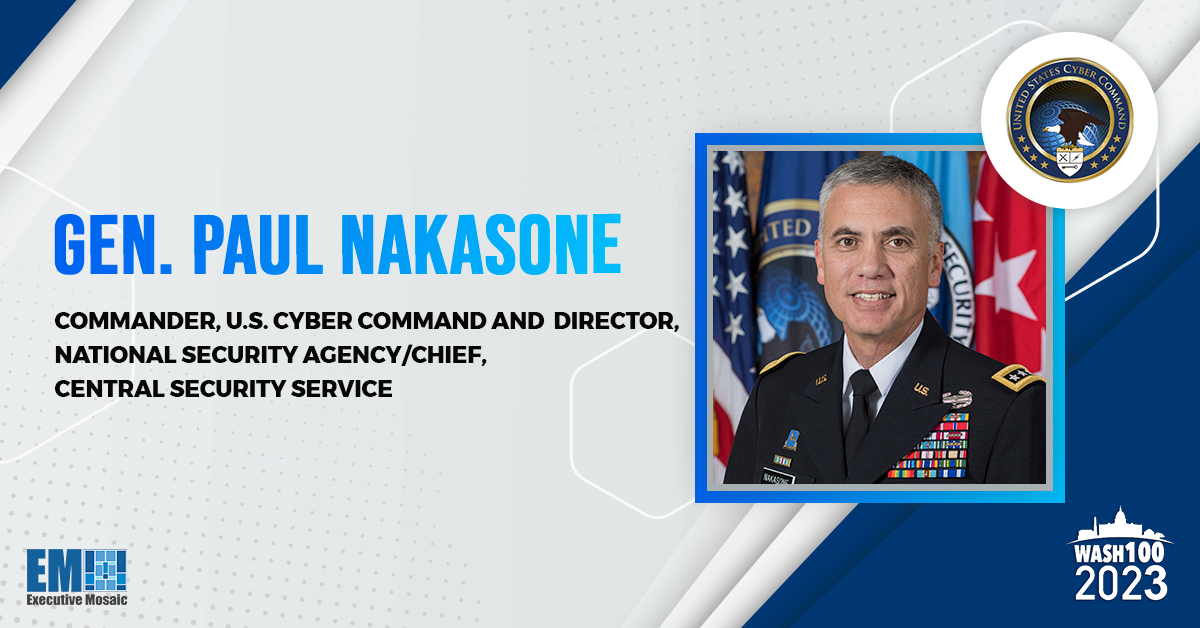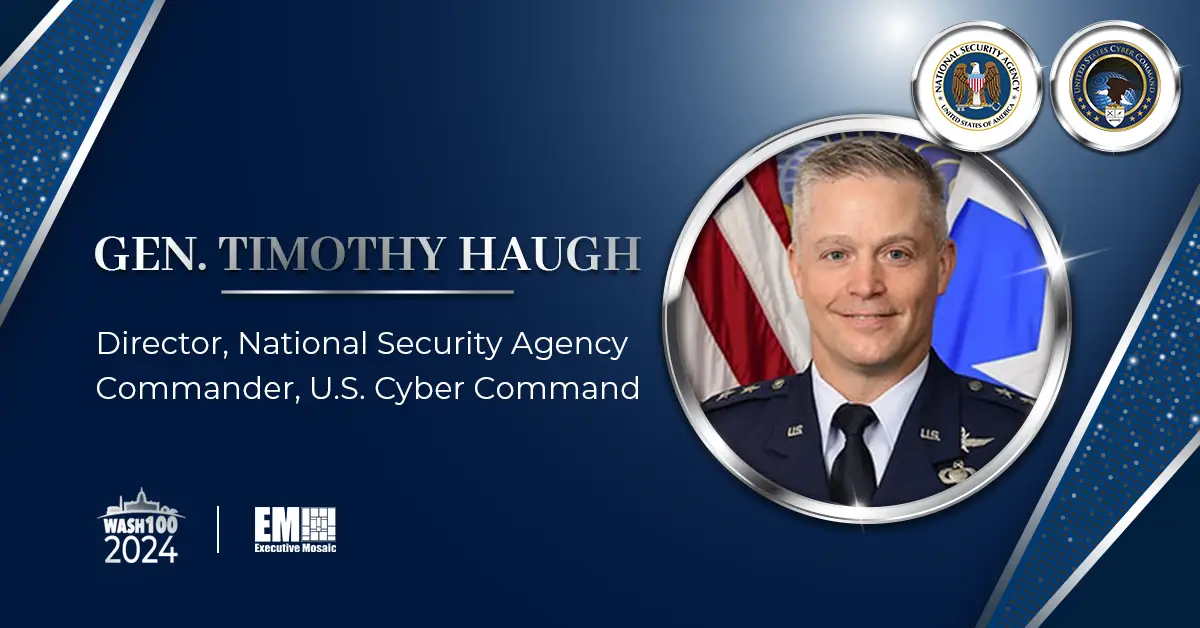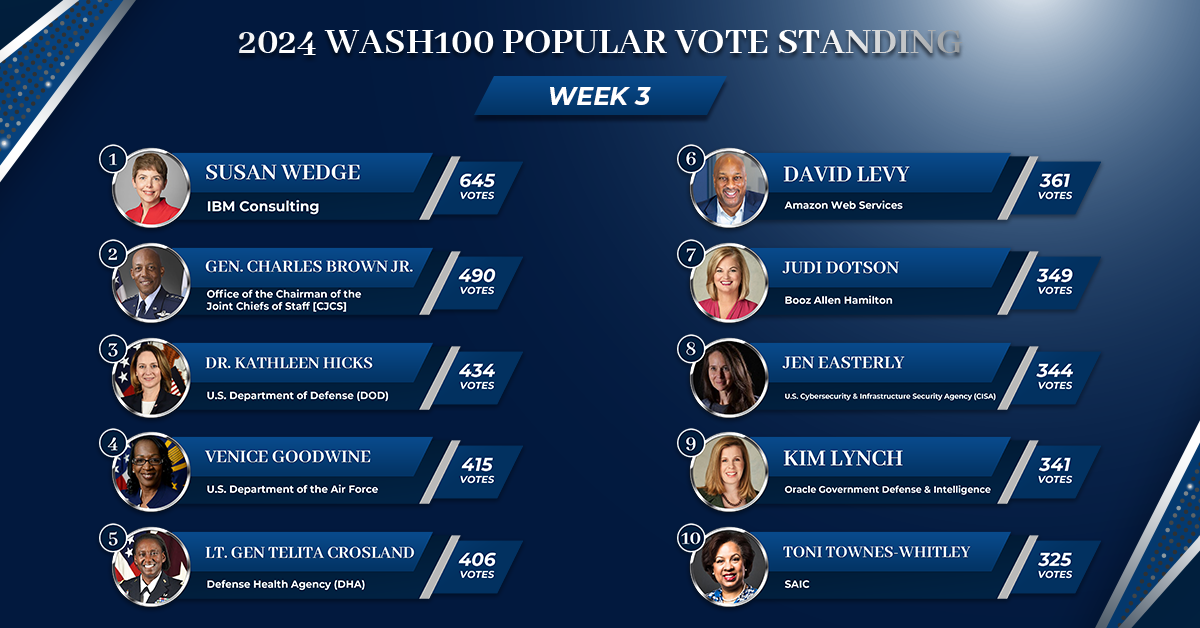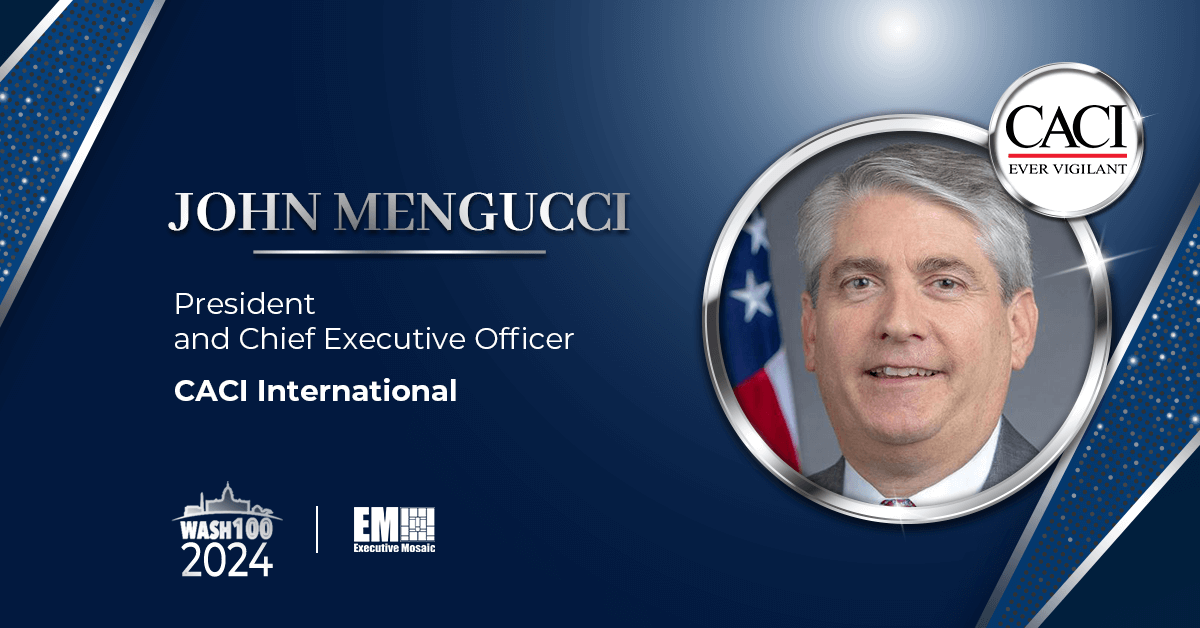Executive Mosaic is honored to introduce Gen. Paul Nakasone, commander of U.S. Cyber Command, director of the National Security Agency and chief of the Central Security Service, as a 2023 Wash100 Award winner for advancing strategic partnerships with agencies, industry and academia and prioritizing the development of a joint cyberspace capability to address national security threats in the digital world.
This recognition marks the seventh consecutive Wash100 Award for Nakasone, who previously led U.S. Army Cyber Command from October 2016 to April 2018.
“Four-star General Paul Nakasone’s name is synonymous with the U.S. Cyber Command, where he has valiantly served his nation concurrently along with his role at NSA,” said Jim Garrettson, CEO of Executive Mosaic and creator of the Wash100 Award.
In April 2022, Nakasone appeared House and Senate lawmakers to discuss five priorities that will help USCYBERCOM improve its capabilities to counter cybersecurity threats and other national security challenges: readiness; operations in defense of the nation; integrated deterrence; recruiting, retention and training; and Joint Cyber Warfighting Architecture and enhanced budget control.
“These elements will be essential to our nation’s security as it faces an array of adversaries who are expanding the scope, scale and sophistication of their operations against us, and will be critical to developing the right mission posture to meet the unprecedented challenge of China,” Nakasone said in his posture statement before the 117th Congress.
For integrated deterrence, he said advancing that priority “means preparing for crisis and conflict while campaigning in competition across the full spectrum of cyber operations” and “building the strategic partnerships that enable the defense of U.S. systems and networks” beyond the defense industrial base and the Department of Defense Information Network.
Before calendar year 2022 ended, the head of Cybercom designated the Cyber National Mission Force as a new subordinate unified command of DOD during a ceremony held in December at Fort Meade in Maryland.
The new sub-unified command is composed of 39 joint cyber teams with over 2,000 service and civilian personnel who help ensure election security, counter cyber espionage, ransomware and other threats and support contingency operations.
Nakasone said CNMF “has always taken that first step forward” as part of USCYBERCOM.
“This has been a command that has understood from Day One, that our strength comes from a series of partnerships,” he added.
The four-star general stressed the role of partnerships in countering evolving cyberthreats when he appeared before students and faculty during a Cybercom Academic Engagement Network welcome session.
Under his leadership, Cybercom carried out several cybersecurity initiatives in 2022, including a 10-day cyberspace defensive operation concept to identify and stop publicly known malware risks and the launch of the Constellation pilot program with the Defense Advanced Research Projects Agency to speed up the delivery of strategic and tactical cybersecurity capabilities to cyber operators.
With Nakasone at the helm, NSA issued reports and guidelines in the past year to help ensure national security.
These include a report that offers guidance on characterizing threats to defense microelectronics; advisory on future requirements for quantum-resistant algorithms for networks or national security systems that contain classified data and are key to intelligence and military efforts; guidance recommending the use of memory-safety languages in software development to counter cyberattacks; and four technical reports that seek to help DOD safeguard programmable microelectronic components from adversary influence and cybersecurity threats.
NSA also collaborated with agencies like the Cybersecurity and Infrastructure Security Agency, FBI and the Office of the Director of National Intelligence to help protect critical infrastructure from cyber vulnerabilities.
Some of the efforts are releasing a joint advisory to warn organizations of Chinese state-backed threat actors targeting network service providers; guidance detailing best practices that developers can adopt to secure the software supply chain; a document outlining the security considerations when implementing a 5G open radio access network infrastructure; and a report on techniques that threat actors use to plan and carry out compromises against operational technology and industrial control system assets.
At a virtual roundtable discussion, Nakasone shared his insights on Section 702 of the Foreign Intelligence Surveillance Act and how it has provided authorities to enable NSA to gather intelligence data on some high-priority targets.
“FISA Section 702 is irreplaceable,” Nakasone during his keynote remarks. “It is focused and limited, yet agile enough to address national security threats in an ever-changing technological and threat environment.”
Nakasone discussed how FISA Section 702 has enabled the U.S. government to identify ransomware attacks perpetrated by foreign threat actors on U.S. critical infrastructure and examine the strategic intentions of Russia, China, Iran and North Korea.
“702 authorities provide exquisite foreign intelligence that is focused on non-U.S. persons outside the United States and specific, invaluable insights that protect our Nation — intelligence that cannot be obtained through other means,” he noted.
Executive Mosaic congratulates Paul Nakasone and Cybercom, NSA and CSS teams for their selection in the 2023 edition of the Wash100 Award. Visit Wash100.com to cast your votes for Nakasone and your other favorite GovCon leaders for this year’s Popular Vote competition.








